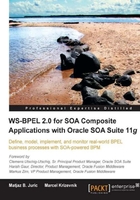
Before the advent of SOA, integration was nothing less than an IT nightmare. Any integration project imposed a tremendous financial and resource burden on the IT department. In many cases, integration was solved with point solutions: here a database link, there a file transfer.
With SOA, things started to look better. SOA allowed organizations to take on integration challenges head-on. SOA provided an opportunity for organizations to build services once and reuse everywhere. Reusability fastened the implementation timelines and reduced the maintenance costs.
As SOA started becoming mainstream and the de-facto choice for standards-based integration, organizations have started expanding their SOA footprint and its use. SOA is no longer just about faster integration. With SOA and the advent of BPM, organizations are now looking to optimize inefficient processes, bring agility through a rules-driven approach, determine visibility into key business metrics, and empower business users to participate in the SOA lifecycle, and so on. These requirements go beyond a simple integration between two applications. SOA is fast becoming an approach to drive IT agility.
However, this expanded role of SOA is not without its own perils. For SOA to optimize business processes, drive agility, and improve visibility, organizations have to bring several technologies together — orchestration engine, rules engine, process modeling tools, process monitoring tools, and data service bus. With different tools from different vendors, the integration challenge has moved to a new level now. Before integrating processes and data, organizations have to first integrate tools and technologies. In short, the solution is now the new problem.
This is where Oracle SOA Suite brings sanity back in the integration landscape. Oracle SOA Suite 11g has been created to provide a unified and integrated experience throughout the entire SOA lifecycle. It has been designed with a goal of shielding developers, IT operations, and business users from underlying infrastructure complexity and providing an experience they would have gotten had they used just one single tool. Oracle SOA Suite 11g brings together an orchestration engine (BPEL Process Manager), a rules engine (Oracle Business Rules), modeling tools (JDeveloper integration with BPA Suite), a process monitoring tool (Oracle BAM), and a data service bus (Oracle Service Bus). But, what makes Oracle SOA Suite really stand apart is how integrated this stack is.
When you read this book, you will see how developers don't have to leave their unified console to business SOA applications and work with all SOA artifacts (processes, rules, activity sensors, services, XML, SQL). Similarly, IT administrators have a single application to install, cluster, and manage their entire SOA deployment, greatly simplifying their duties. And the good news is everything is standards based.
As you start building SOA applications, this book will be your trustworthy companion. Along with how-to tutorials, you will also get to hear interesting insights on competing standards, architecture patterns, and best practices. This book is a true successor of Oracle BPEL. We would like to thank Matjaz for putting this together.
May SOA force be with you!
Clemens Utschig-Utschig, Sr. Principal Product Manager, Oracle SOA Suite
Harish Gaur, Director, Product Management, Oracle Fusion Middleware
Markus Zirn, VP Product Management, Oracle Fusion Middleware